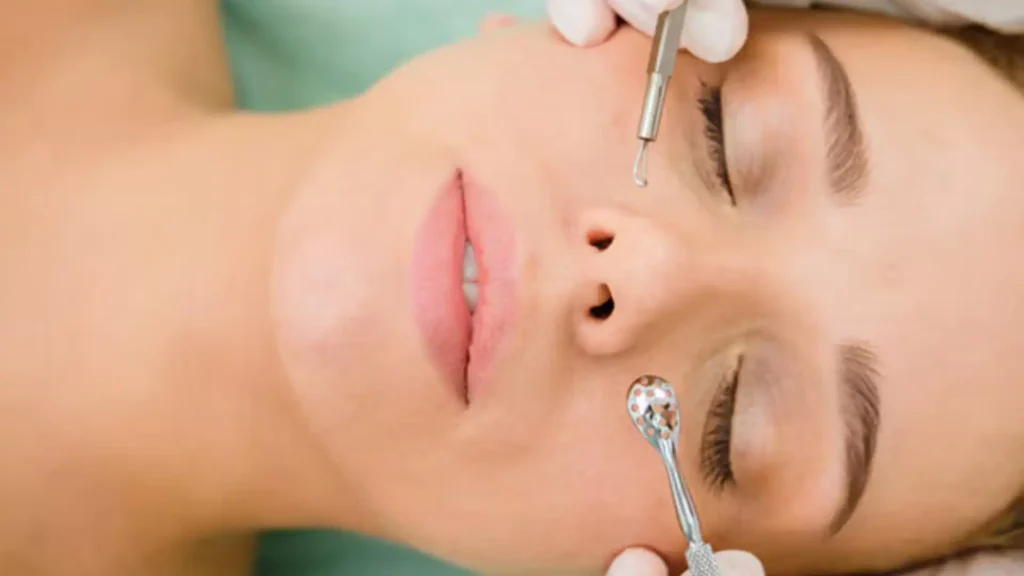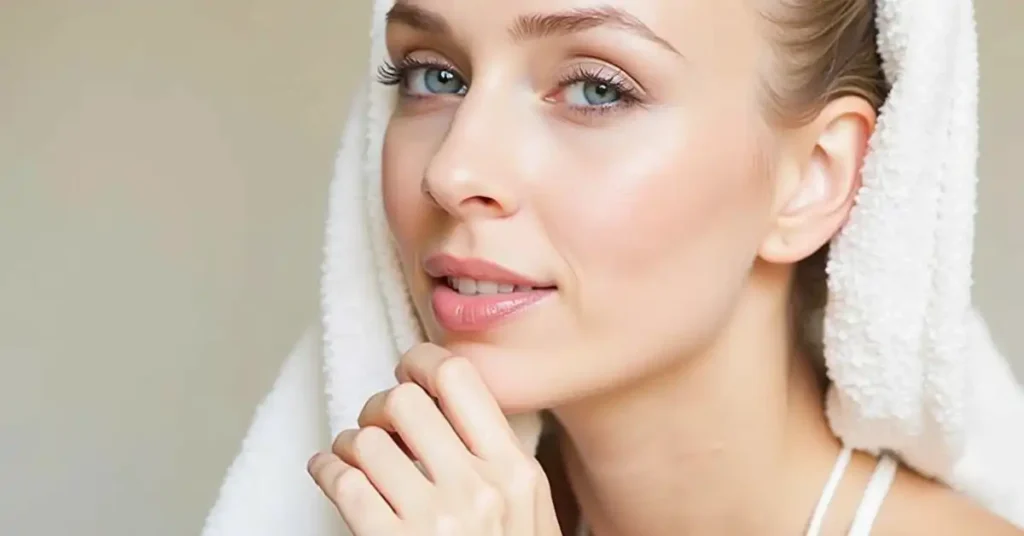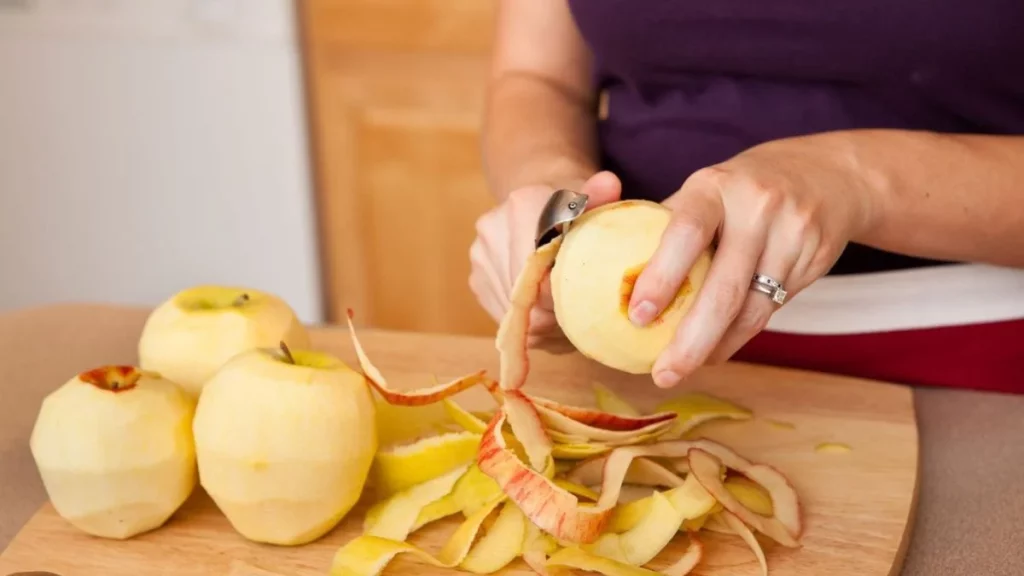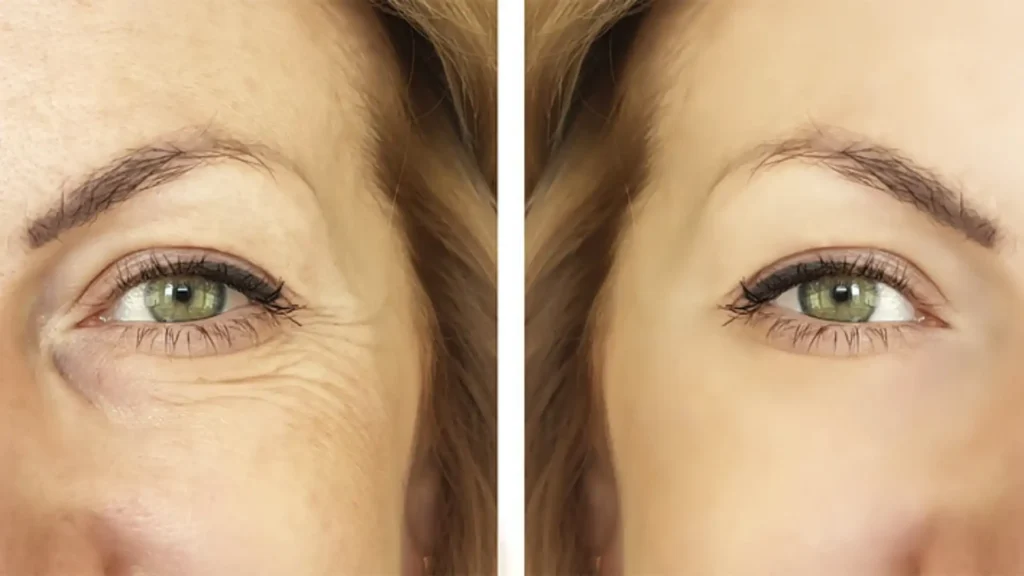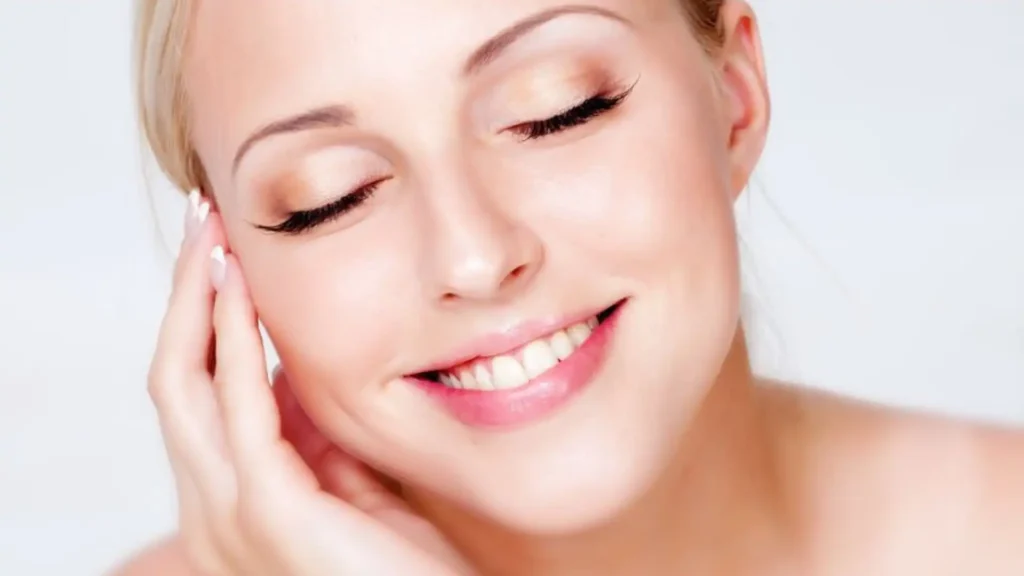Blackheads are a mild form of acne caused by clogged hair follicles. While it’s best to avoid popping them, there are safe ways to extract blackheads at home. This guide will help you identify blackheads, use safe extraction methods, and prevent them from coming back.How to remove blackheads.
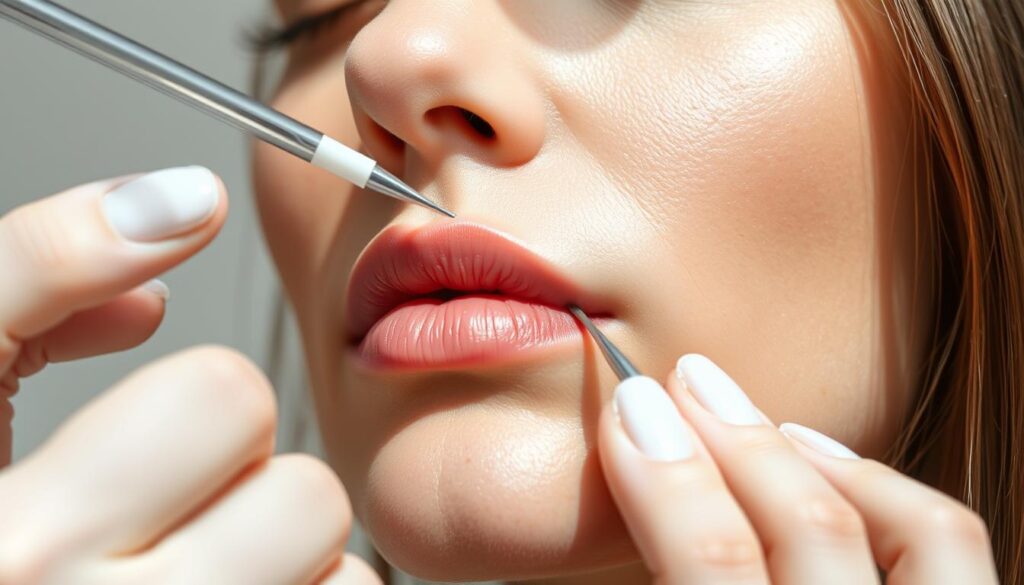
Professional estheticians often remove blackheads and other blemishes safely during facial treatments. They prepare the skin with steam, exfoliate, and use tools like comedone extractors. Regular extractions can prevent bigger, more painful pimples, showing the importance of professional skincare.
There are many over-the-counter products to help remove blackheads, like face washes and masks. But, it’s crucial to use them correctly to avoid harming your skin. This guide will teach you how to safely pop blackheads at home, helping you manage this common skin issue.
Understanding Blackheads and Their Formation
Blackheads, also known as open comedones, are a common skin issue. They happen when dead skin cells and extra sebum get stuck in pores. This creates a clogged pore. When exposed to air, this plug oxidizes and turns dark, making blackheads look black.
What Causes Blackheads to Form?
Several things can lead to blackheads, including:
- Too much oil in the skin, often from hormones or certain meds
- Dead skin cells not shedding properly, clogging pores
- Buildup of comedones, small plugs of sebum and dead skin
- Oxidation of the plugged material when exposed to air
How to Identify True Blackheads
It’s key to tell true blackheads from other skin issues. Real blackheads look black or dark and feel rough. They show up on the face, chest, back, and other oily areas.
Why Blackheads Turn Dark
The dark color of blackheads comes from the oxidation of trapped sebum and debris. When this mix meets air, it reacts with oxygen. This reaction turns it a dark, blackish color.

“Blackheads are a mild type of acne that can appear on various body parts, including the back, chest, neck, arms, and shoulders.”
Essential Pre-Extraction Preparation Steps
Getting your skin ready is key for safe and effective blackhead removal. Before you start, make sure to clean, steam, and exfoliate your skin. This routine opens pores, softens blackheads, and makes the extraction smoother.
Begin with double-cleansing. Use an oil-based cleanser to get rid of makeup and oils. Then, a water-based cleanser to remove all left-over dirt. This makes your skin ready for the extraction. How to remove blackheads.
Then, steam your face to open pores. You can do this by taking a warm shower or by holding your face over hot water. This step is important for pore opening and making the extraction easier.
- Exfoliate gently with a soft-bristle brush or a washcloth. This removes dead skin cells that can clog pores.
- Pat your skin dry and avoid harsh rubbing to prevent irritation.
By following these steps, you’ll be ready for a successful blackhead removal. Your skin will be clean, soft, and ready for easy extraction.

“The key to successful blackhead extraction is proper preparation. Take the time to cleanse, steam, and exfoliate for the best results.”
Safe Methods for Popping Blackheads
Blackheads can be tempting to pop, but it’s important to do it right. This avoids damaging your skin. Follow these steps for safe blackhead popping at home. How to remove blackheads.
Steam Treatment Technique
Start by opening your pores with a warm steam. Hold your face over a bowl of hot water for 5-10 minutes. Be careful not to burn your skin. The steam will make the blackheads softer and easier to remove.
Proper Hand Hygiene
Make sure your hands are clean before popping blackheads. Wash them with soap and water, then dry with a clean towel. This helps prevent infections and more breakouts. How to remove blackheads.
Correct Pressure Application
Use tissue-wrapped fingers to cover the clogged pore. Apply gentle, even pressure. Slowly rock your fingers to help the comedone come out. Don’t use your fingernails and stop if it doesn’t come out easily to avoid damage.
If blackheads are hard to get out, use a comedone extractor. This tool is made for gentle removal. Place the extractor’s loop around the blackhead and press gently to guide it out.
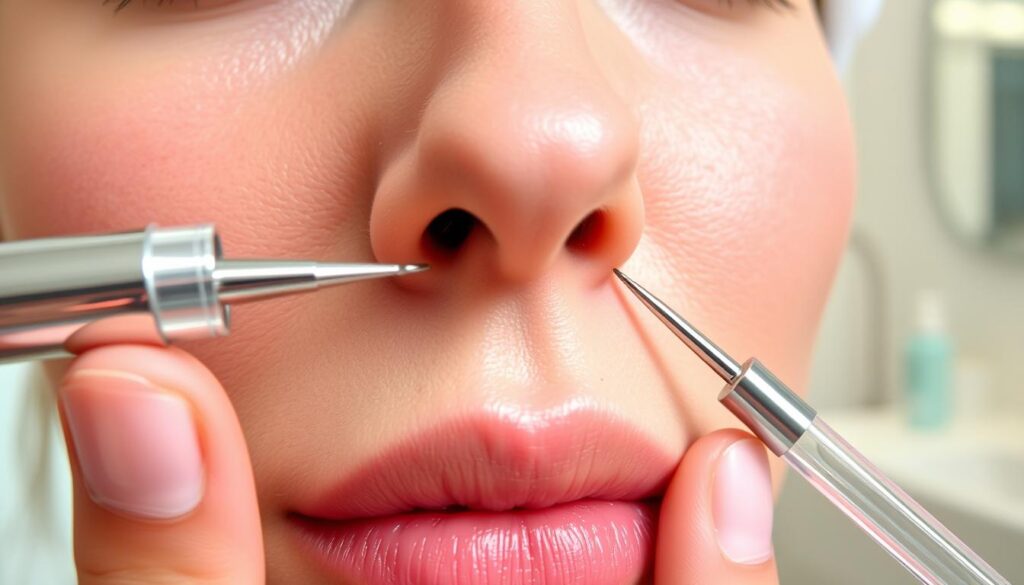
“Proper technique and hygiene are key when popping blackheads at home. Rushing or using too much force can lead to scarring and infection.”
Professional Tools and Equipment
Professional tools like comedone extractors can change the game for stubborn blackheads. These stainless steel tools have a small loop for applying pressure. This helps gently remove debris from clogged pores. But, it’s key to use them right to avoid skin irritation or damage.
Facial steamers are also great for fighting blackheads. They warm and soften the skin, making pores ready for extraction. This makes the process more effective and less painful.
“While professional tools can be helpful, it’s safest to have a trained esthetician perform extractions, especially for deep-seated or stubborn blackheads.”
It’s crucial to use these tools carefully to avoid skin problems. Wrong use can cause irritation, broken blood vessels, or spread bacteria. For the best results, let a licensed esthetician handle blackhead extractions, especially for tough ones.

Looking for blackhead removal tools? You’ll find many options at various prices. Affordable choices include the Revlon Stainless Steel Blackhead Remover for $8, and the Fixbody Blackhead and Splinter Remover Tools for $8. The JPNK Blackhead Extractor Removal Kit is also available for $7. How to remove blackheads.
For a more advanced tool, the Dr. Dennis Gross DRx SpectraLite™ FaceWare Pro is a professional-grade LED light therapy device. It costs $455 at Sephora.
Natural Remedies for Blackhead Treatment
Dealing with blackheads doesn’t mean harsh chemicals or painful extractions. Natural remedies offer a gentler way to tackle this common issue. Tea tree oil’s antibacterial properties and clay masks’ pore-cleansing benefits are just a few examples. These natural solutions can be great alternatives or additions to traditional methods.
Tea Tree Oil Solutions
Tea tree oil is known for its antibacterial properties and its ability to manage acne-prone skin. A small study found that 14 people with mild to moderate acne saw improvement after using a tea tree oil gel for 12 weeks. This suggests that tea tree oil can help manage symptoms without causing severe side effects. How to remove blackheads.
Clay Mask Applications
Clay masks are a big help for pore cleansing. They absorb excess oil and pull out impurities from deep within pores. Adding a weekly clay mask to your routine can be a great step in your natural skincare journey.
Oatmeal-Based Treatments
Oatmeal is a gentle, soothing option for natural skincare. Oatmeal treatments can exfoliate the skin, removing dead cells and debris that lead to blackheads. Its skin-nourishing properties make it a valuable tool in fighting blackheads.
By adding these natural remedies to your skincare routine, you can fight blackheads gently and holistically. Always do a patch test and watch for any skin reactions, as everyone’s skin is different. How to remove blackheads.
“Gentle, natural solutions can be just as effective in addressing blackheads as more conventional methods.”
Post-Extraction Skin Care
After popping blackheads, your skin needs the right care. Use a toner or mild astringent, like witch hazel, to kill bacteria and condition pores. Also, avoid touching the area to prevent irritation or infection.
Choose non-comedogenic moisturizers to keep your skin moisturized without clogging pores. Look for products with salicylic acid or benzoyl peroxide. They help prevent future blackheads and promote skin healing.
“Proper post-extraction skin care is essential for preventing inflammation, infection, and future breakouts,” notes renowned dermatologist Dr. Sarah Wilkins.
- Apply a toner or astringent to disinfect pores
- Avoid touching the treated area directly
- Use non-comedogenic moisturizers to hydrate skin
- Consider products with salicylic acid or benzoyl peroxide
By following these steps, your skin will heal fast and prevent future blackheads. A consistent skincare routine is vital for clear, healthy-looking skin.
When to Avoid Popping Blackheads
It might seem tempting to pop those stubborn blackheads. But, doing so can cause acne inflammation, skin irritation, and even scarring. It’s important to know when to leave them alone and get help from a professional extraction expert.
Signs of Inflammation
If the area around the blackhead looks red, swollen, or hurts, it’s inflamed. Trying to pop it can push bacteria deeper, causing more breakouts and infections. Let the inflammation go down before trying to extract it. How to remove blackheads.
Deep-Seated Blackheads
Some blackheads are deep in the skin and hard to remove safely at home. Forcing them out can harm the skin and lead to scars. It’s wise to see a dermatologist or esthetician for safe removal. How to remove blackheads.
Sensitive Skin Considerations
People with sensitive skin need to be extra careful with blackheads. The wrong way to pop them can make skin irritation worse and cause more breakouts. If you have sensitive skin, don’t try to pop blackheads at home. Instead, talk to a skin care professional. How to remove blackheads.
Some blackheads are better left to the experts. If you’re not sure about popping a blackhead, it’s safer to get professional help. This way, you avoid any possible problems.
Prevention Tips and Daily Skin Care Routine
Keeping your skincare routine consistent is crucial to stop blackheads. Choose products that are oil-free and won’t clog pores. Regular exfoliation helps remove dead skin cells that can lead to blackheads.
Cleanse your face every day, especially after sweating or activities that make your face oily. Adding retinoids or salicylic acid to your routine can help keep pores open. Also, protect your skin from the sun, as some treatments can make it more sensitive.
- Use oil-free, non-comedogenic products to avoid clogging pores
- Exfoliate regularly to remove dead skin cells
- Cleanse skin daily, especially after sweating
- Try retinoids or salicylic acid to prevent pore blockages
- Protect skin from sun damage to avoid increased sensitivity
“Developing a consistent skincare routine is essential for keeping blackheads at bay. Stick to non-comedogenic, oil-free products and incorporate regular exfoliation to maintain clear, healthy-looking skin.”
By following these simple tips and creating a daily skincare routine, you can reduce blackheads. Remember, being consistent is key for managing oil, using non-comedogenic products, and exfoliating. How to remove blackheads.
Conclusion
Extracting blackheads at home can be safe with the right techniques. But, prevention and consistent skincare are crucial for clear, healthy skin. If blackheads persist or worsen, seeing a dermatologist is wise. They can offer tailored treatments for your skin concerns. How to remove blackheads.
Blackhead management is vital for skin health. By following this guide, you can tackle blackheads safely. But, for tough cases, a dermatologist’s advice is essential. They can create a treatment plan that fits your skin perfectly. How to remove blackheads.
Focus on prevention, stick to a good skincare routine, and know when to get professional help. This way, you can manage your skin’s health and get a brighter complexion. Remember, your skin reflects your overall health. Taking care of it holistically can boost your confidence and improve your life. How to remove blackheads.
FAQ
What causes blackheads to form?
Blackheads are a mild form of acne. They happen when dead skin cells and oil clog a hair follicle. This causes them to push through the skin’s surface.
How can I identify true blackheads?
True blackheads look different from just oil buildup. They are open comedones that turn black when they meet oxygen.
What is the proper way to prepare my skin for blackhead extraction?
To safely extract blackheads, start with a clean skin. Use steam to open pores and exfoliate gently. Double-cleansing with oil and water-based cleansers removes makeup and pollutants well. How to remove blackheads.
How do I safely extract blackheads at home?
For safe extraction, keep your hands clean and use gentle pressure. Wrap your fingers in tissue or cotton. Apply pressure around the clogged pore, moving your fingers back and forth. Use a comedone extractor carefully. How to remove blackheads .
What professional tools can I use for blackhead removal?
Tools like comedone extractors can be effective if used right. They have a small circle for applying pressure. Facial steamers help prepare the skin. It’s best to let a trained esthetician do the extractions, especially for tough blackheads.
What natural remedies can help treat and prevent blackheads?
Natural remedies like tea tree oil, clay masks, and oatmeal treatments work well. They offer antibacterial, oil-absorbing, and exfoliating benefits. These can be good alternatives or additions to traditional methods.
What should I do after extracting blackheads?
After extraction, take care of your skin. Use a mild astringent or toner to kill bacteria and condition pores. Choose non-comedogenic moisturizers to keep your skin hydrated without clogging pores. Products with salicylic acid or benzoyl peroxide can help prevent future blackheads. How to remove blackheads.
When should I avoid popping blackheads at home?
Don’t pop inflamed or deep-seated blackheads at home. It can cause scarring or infection. People with sensitive skin should be careful. Never squeeze red, inflamed pimples. If blackheads are hard to remove, see a dermatologist or esthetician. How to remove blackheads.
How can I prevent blackheads in the long run? How to remove blackheads.
To prevent blackheads, follow a consistent skincare routine. Use oil-free, non-comedogenic products. Exfoliate regularly to remove dead skin cells. Clean your skin daily, especially after sweating. Use retinoids or salicylic acid products to prevent blockages. Protect your skin from sun damage, as some treatments can make it more sensitive. How to remove blackheads.
Discover more trends:
- Comprehensive Guide: How to Remove Blackheads Effectively
- 16 Beauty Tips to Turn You Into a Hollywood Star
- 4 Home Remedies for Blackheads That Actually Work
- The Best Facial Scrubs to Remove Blackheads
- 26 SkinCare Mistakes You Should Stop Making Right Now for Healthier Skin
- Follow us on Facebook
- Follow us on Pinterest

